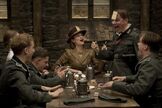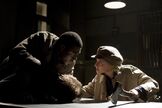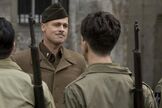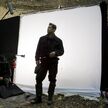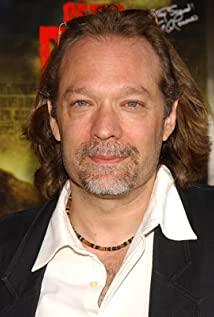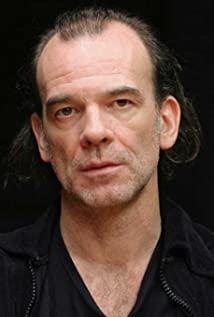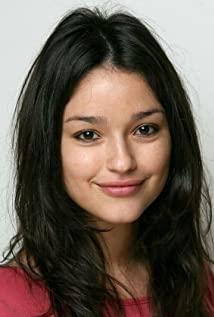Just talk about the rhythm of this movie (the understanding of the movie rhythm comes from Su Yang Movie ).
In the understanding of rhythm in a movie, the most important thing is the perception of time. Our perception of time is extremely unstable. Different sound, light and color in the movie, different psychological states of the audience and different environmental pressures will bring different effects. The sense of time is the rhythm we feel.
In the film, the rhythm is mainly divided into visual rhythm, auditory rhythm, distance rhythm, color rhythm, narrative rhythm, etc., and pick a few impressive clips at will.
At the beginning of the movie, since the dairy farmer's daughter saw Colonel Hans appear, Quentin put his feelings about time on the distance between Lance and the dairy farmer. The farmer let his daughter in, fetch water, wash her face and finally stand Waiting for the arrival of Hans in front of the house, this series of clips accompanied Hans getting closer and closer to the farmer's house, and the audience's psychology became more and more tense, until Hans and the dairy farmer appeared in the picture at the same time. A rhythmic tension.
When Aldo and his group of basterds asked the "Jewish Bear" to blow the officer's head with a baseball bat after the interrogation of the German officer was fruitless, the camera switched back and forth between the entrance of the dark tunnel and the expressions on the faces of the German officers and soldiers, accompanied by The percussion of the baseball bat, which is not in a hurry, is not slow, and the rhythm is based on the percussion, that is, the auditory rhythm. In the percussion of this sound, the dark tunnel mouth is still dark, giving the audience a kind of creation. A sense of unknown fear, and at the same time, I can see that the officer's instinctively panicked eyes gradually became firmer at the beginning, while the soldier gradually lost control, trembling all over, and snot running, especially with the sound of percussion getting louder and louder. Faster, brought an emotional climax, and it wasn't until Tony came out of the tunnel with a baseball bat that he was released.
There is also a shootout in an underground tavern. There are two parts. The first part is the relatively chaotic state when the basterds are going to push the German sergeant back to another table. With a line, the camera suddenly switches to the tavern compartment and sweeps the table. A glass of beer, and the major sitting quietly, changed from the original chaotic and noisy state to orderly and quiet. This is not only the transformation of the sound, but also the transformation of the space brought about by the movement of the camera. The second part is the moment when the gun battle begins. One moment before the major, the British officer and the female spy are still fighting their wits, and the next moment they shoot volleys. Zhongdu was only for a split second, before the audience could react, the shootout was over, leaving only the German sergeant standing in the same place with a submachine gun, in a trance, and there was silence again...
The most obvious color rhythm is Susannah's bright red dress on the night of revenge, which heralds the climax of the whole plot. From the dark room to the cinema hall, red shuttles between darkness and light, all so prominent and unique, just like The chapter's core is revenge-like, and the audience's attention flows with it. In addition, in the screening room, the German hero and Susannah fought against each other. With the poignant background music, a white officer and a red Suzanne both fell to the floor at the end. The rhythm stopped at this moment, or there was love or not. Stop here.
Finally, let me mention the narrative rhythm of the film within the film. At the end of the screening of "National Hero", the German hero Frederick asked: who has something to say to the Germans, and then Susannah calmly and majestic condescendingly said down. To: I have something to say to the Germans. At this time, the plot of the movie in the movie was completely reversed, and the theater was full of accusations and abuse, which gradually pushed the order of the theater into chaos, until the film ignited and reached a climax.
The above are just some clips of the movie. There are many similar rhythm treatments in this movie, which is also Quentin's consistent style. When a word disagrees, it breaks out, and it is calmed down for a moment, and the emotions are released between a gallop.
View more about Inglourious Basterds reviews



